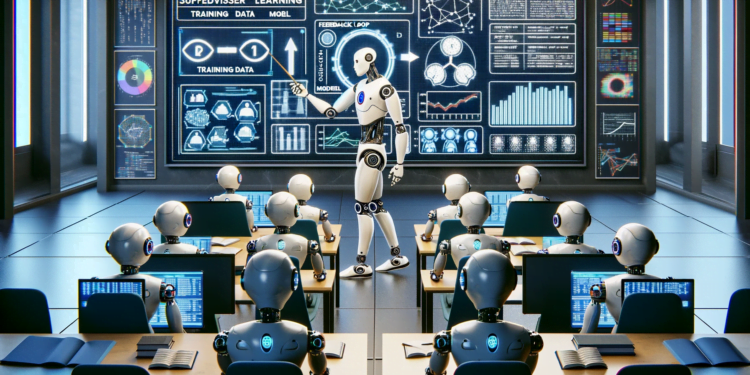Artificial Intelligence (AI) is a branch of computer science that focuses on creating systems capable of undertaking tasks that would normally require human intelligence; these tasks include natural language understanding, pattern recognition, and decision-making. Within this expansive field, supervised learning is a cornerstone for the creation of highly effective predictive models. This article explores key terms and concepts that form the backbone of supervised learning in AI.
Supervised Learning
Supervised Learning: It is a category of machine learning where a model is taught to make predictions from a set of labeled examples. These examples consist of input-output pairs, where the output is provided by a “supervisor” and is used to guide the model’s learning process.
Data and Preprocessing
Dataset: A collection of structured data used for training or validating a supervised learning model. Datasets are typically divided into training, validation, and test sets.
Data Preprocessing: A set of techniques used to prepare raw data for analysis and modeling. In supervised learning, preprocessing may include normalization, standardization, categorical encoding, and handling of missing values.
Models and Algorithms
Predictive Model: A mathematical or computational model that is used to make predictions about new data based on learnings from previous datasets.
Regression: A supervised learning technique focused on predicting continuous variables. Linear regression is a common example, which seeks the line that best fits the data.
Classification: A supervised learning technique that focuses on predicting discrete categories or class labels. Algorithms such as decision trees or neural networks are often used for classification tasks.
Artificial Neural Networks (ANN): Computational models inspired by the human brain that are capable of learning from data. In supervised learning, ANNs adjust their internal parameters to minimize the error in predicting the labeled data.
Support Vector Machine (SVM): A supervised learning model that looks for the best hyperplane that separates the classes in feature space. It is widely recognized for its effectiveness, especially in high-dimensional spaces.
Model Evaluation
Cross-Validation: A model evaluation method that involves dividing the dataset into k parts, training the model on k-1 of them, and validating it with the remaining set. This is repeated k times to ensure the model’s robustness.
Confusion Matrix: An evaluation tool used primarily in classification problems. It allows visualizing the model’s performance by differentiating between true positives, false positives, true negatives, and false negatives.
Precision and Recall: Metrics used to assess the quality of models in classification tasks; precision measures the proportion of correct predictions among all positive predictions, while recall or sensitivity measures the proportion of true positives detected.
Optimization and Fine-Tuning
Learning Rate: A crucial hyperparameter that defines the magnitude of the model’s parameter update at each training step. A rate that is too high can make the learning unstable, while one that is too low can slow down the process.
Early Stopping: A technique used to prevent overfitting. It consists of stopping the training once the model’s performance on the validation set ceases to improve.
Emerging Trends
Deep Learning: A subfield of supervised learning that uses neural networks with multiple hidden layers to extract hierarchical data representations. It has been responsible for significant advancements in areas such as image recognition and natural language processing (NLP).
Transfer Learning: A technique that involves taking a model trained on one dataset and retraining it with a new, related dataset. This practice can significantly reduce the time and resources needed to develop effective models.
AutoML (Automated Machine Learning): An emerging set of technologies designed to automate the process of selecting, building, and tuning machine learning models, speeding up the AI model development lifecycle.
Conclusion
Supervised learning is an indispensable methodology in the development of predictive models, and a deep understanding of it is fundamental for any professional in the field of artificial intelligence. Just like technology, the glossary of terms in AI is continuously evolving, constantly incorporating new terms and concepts as the field expands and matures. This glossary provides a window into the current principles and some of the emerging techniques that are defining the cutting edge of supervised learning in AI.
Depth in understanding these terms and their correct application can be the crucial difference in the success or failure of AI solutions in the real world. As AI continues to evolve, it is essential for professionals to stay up-to-date with the technical language and advancements in the field to maximize its potential benefits.






















